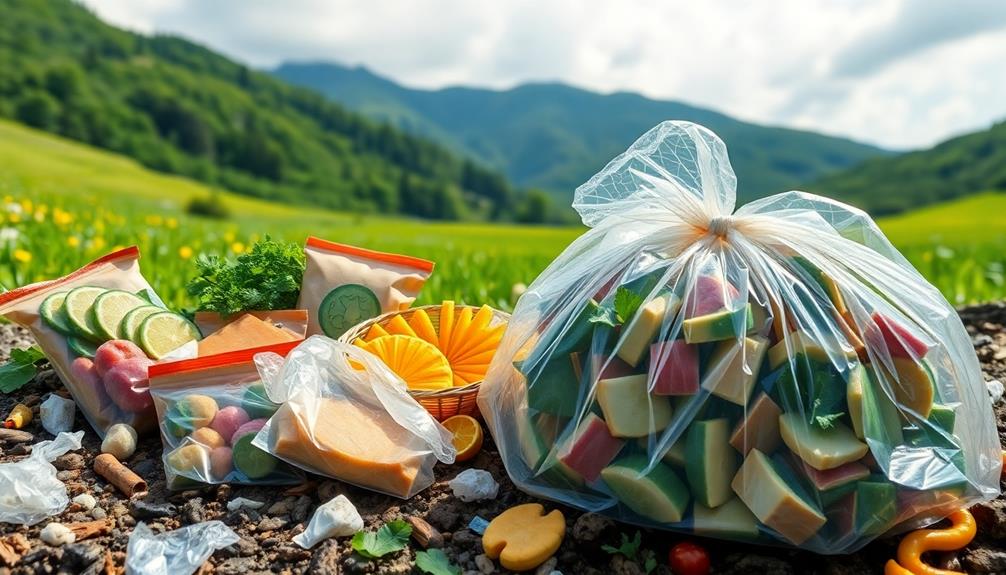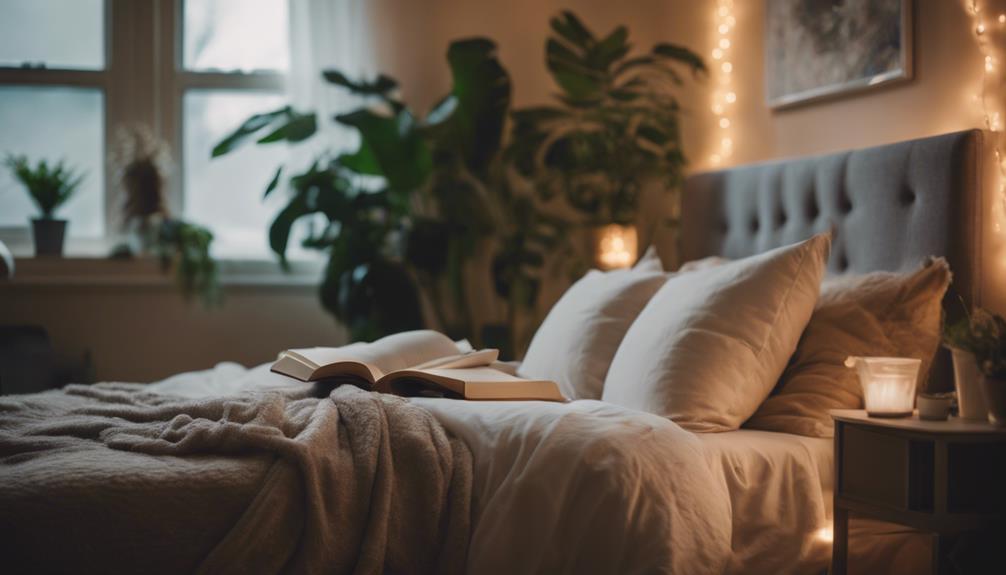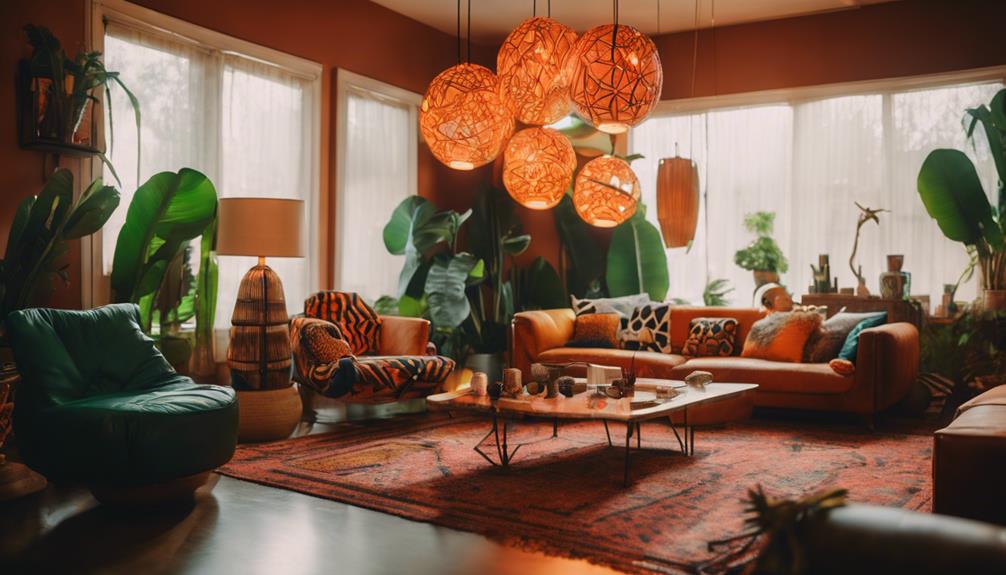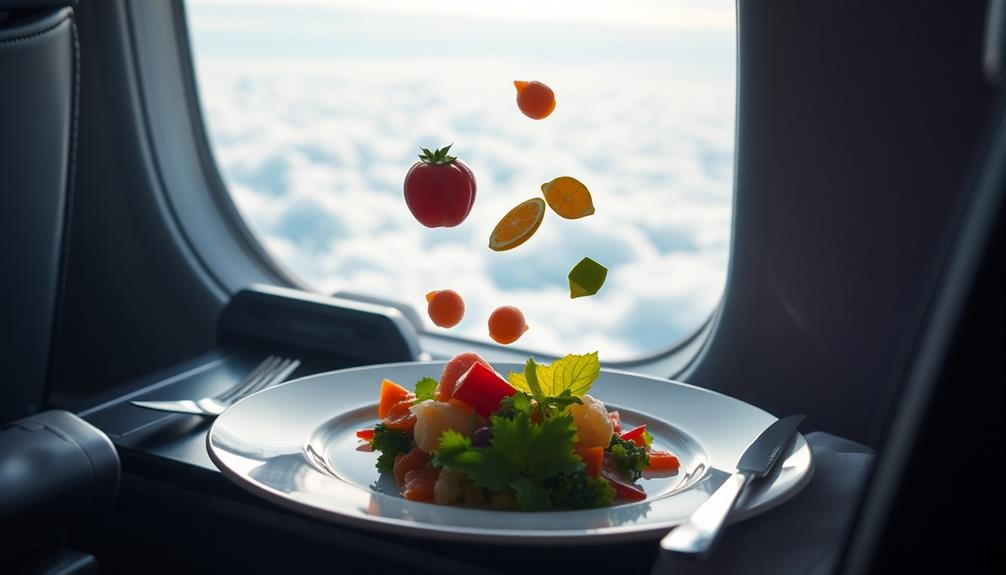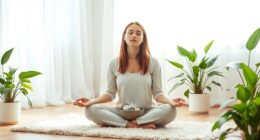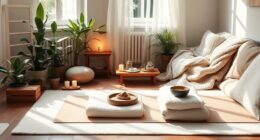Food packaging plays an essential role in shaping your views on environmental sustainability. When you encounter packaging made from biodegradable or recyclable materials, you're more likely to associate the product with eco-friendliness. Your preferences lean towards brands that prioritize sustainable options, especially as awareness grows about plastic pollution and waste management. The design and materials used greatly impact your perceptions, influencing your buying choices. As consumers increasingly demand greener alternatives, businesses are adapting to meet these expectations. Discovering how these trends evolve could inspire you to make more informed choices regarding packaging and sustainability.
Key Takeaways
- Food packaging significantly contributes to plastic pollution, with over two-thirds of materials being synthetic plastics, impacting environmental perceptions negatively.
- A growing number of consumers are willing to pay more for sustainable packaging, reflecting increased awareness and concern for environmental issues.
- Biodegradable packaging options are rising in popularity, with over 60% of consumers preferring eco-friendly materials that decompose naturally.
- Packaging design, including color and structural features, influences consumer perceptions of sustainability and a brand's environmental commitment.
- Social media activism drives demand for sustainable practices in packaging, shaping consumer preferences and encouraging brands to adopt eco-friendly solutions.
Overview of Food Packaging

Food packaging is essential for safeguarding products and shaping consumer perceptions about sustainability. It not only protects food but also communicates crucial information about its environmental impact.
The food packaging industry is the largest consumer of synthetic plastics, with food packaging accounting for over two-thirds of all packaging materials. This heavy reliance on plastics contributes greatly to plastic pollution and environmental degradation.
In Brazil, traditional dishes like Caldeirada not only highlight cultural richness but also raise awareness of sustainable seafood practices.
You might be surprised to learn that nearly 50% of municipal solid waste consists of food and packaging materials. This statistic highlights the urgent need for effective waste management strategies.
As consumer demand for sustainable packaging options rises, you'll find that more than one-third of global consumers are willing to pay extra for recyclable and reusable packaging.
Consumer Awareness and Sustainability
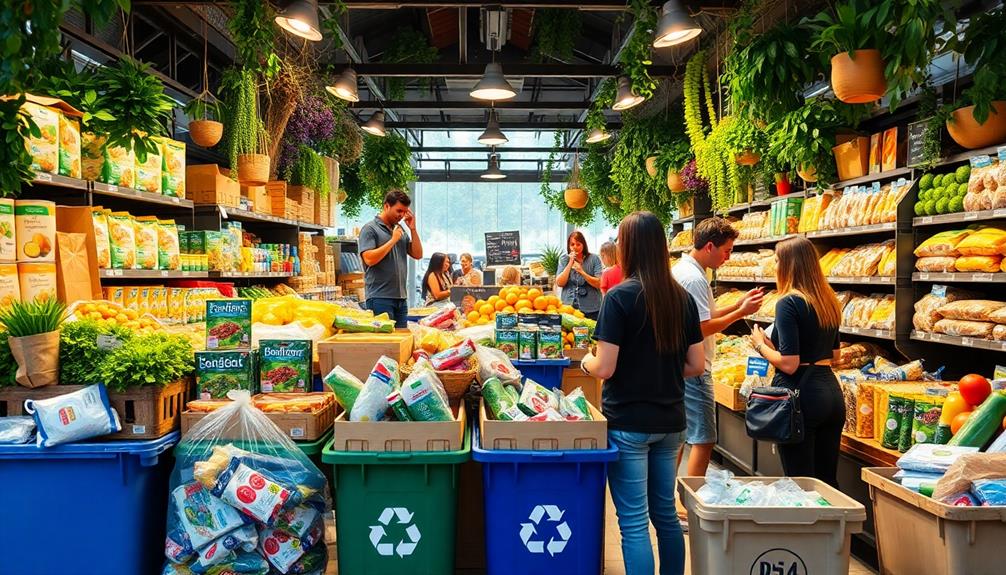
You might be surprised to learn that over a third of consumers are ready to spend more on sustainable packaging.
This shift in behavior shows a strong demand for eco-friendly options, especially biodegradable materials.
The rising interest in seasonal, farm-to-table ingredients, such as Nettle and Potato Soup, also reflects a broader commitment to sustainability.
As awareness of environmental issues grows, it's vital for you to understand how your choices impact the planet.
Eco-Friendly Packaging Trends
As consumers become increasingly aware of their environmental impact, the demand for eco-friendly packaging options is soaring. This trend highlights a significant shift in consumer preferences, especially in sectors like fast food, where food packaging waste is a growing concern.
Additionally, the popularity of traditional foods such as Chilaquiles and their associated packaging demonstrates the need for sustainable solutions in the culinary world. More than one-third of global consumers are now willing to pay extra for sustainable packaging, reflecting heightened environmental consciousness.
Key trends shaping eco-friendly packaging include:
- Biodegradable materials: Consumers are favoring packaging that decomposes naturally, reducing waste.
- Green packaging: Brands are adopting materials that minimize environmental impact, appealing to eco-conscious buyers.
- Transparent labeling: Clear information on packaging helps consumers make informed choices about sustainability.
- Social media influence: Activism on platforms amplifies the demand for brands to adopt sustainable practices.
- Market trends: A significant portion of consumers (60.64%) prefers bioplastic and biodegradable options, indicating strong support for eco-friendly materials.
These shifts not only improve brand loyalty but also encourage companies to innovate in their packaging strategies.
Ultimately, embracing sustainable packaging isn't just beneficial for the environment; it aligns with the values of today's consumers.
Consumer Behavior Insights
How are consumer behaviors shifting in response to growing environmental concerns? You might be surprised to learn that over one-third of global consumers are now willing to pay more for sustainable food packaging options. This strong preference for eco-friendly materials, particularly paper over plastics, signals a significant shift in consumer behavior.
A recent survey showed that 60.64% of respondents are open to paying extra for biodegradable packaging, highlighting the rising demand for environmentally responsible choices. Additionally, many consumers are increasingly interested in the sustainability of the food itself, which aligns with the growing popularity of traditional dishes like Red-Braised Pork Belly made with responsibly sourced ingredients.
With nearly 50% of municipal solid waste made up of food and packaging materials, it's clear that food packaging plays an essential role in our environmental impact. Fast food packaging is a notable contributor, and 41.3% of consumers believe it has a very large ecological footprint.
Such perceptions are driving change, as social media and activism push brands to adopt more sustainable packaging solutions. As a result, you're likely noticing more businesses embracing eco-friendly materials in response to your concerns.
This growing awareness not only shapes consumer behavior but also encourages companies to prioritize sustainability, making a positive difference in reducing packaging waste and addressing environmental concerns.
Role of Packaging Design
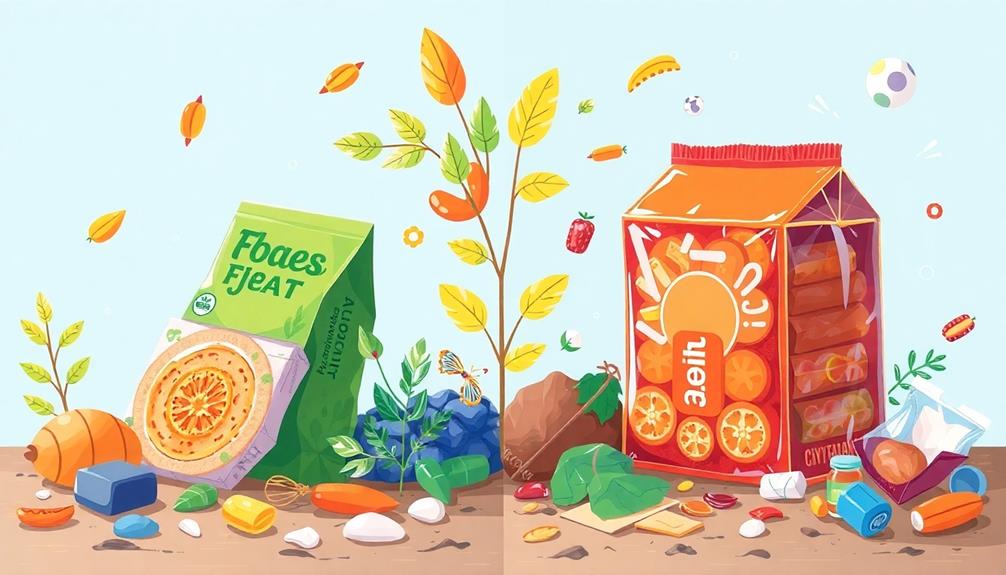
Designing packaging plays a pivotal role in shaping consumer perceptions of sustainability. When you think about how packaging impacts your choices, you mightn't realize that the design elements can markedly affect how you view a product's environmental commitment.
For example, just as traditional Italian dishes like Agnolotti showcase regional culinary skills, effective packaging can reflect a brand's commitment to local and sustainable practices.
Key components of effective packaging design include:
- Color: The color of packaging can strongly convey green concepts and influence your perception of sustainability.
- Material Choice: Using biodegradable materials is essential, as they're strongly associated with green packaging.
- Structural Design: Features that enhance recycling and reuse directly communicate a brand's sustainability efforts.
- Clear Text: Including educational messaging helps you understand sustainable practices, making it easier to make informed choices.
- 4R1D Principle: This framework—Reduce, Reuse, Recycle, Recover, and Design—ensures that packaging aligns with both environmental goals and functional needs.
Psychological Influences on Choices
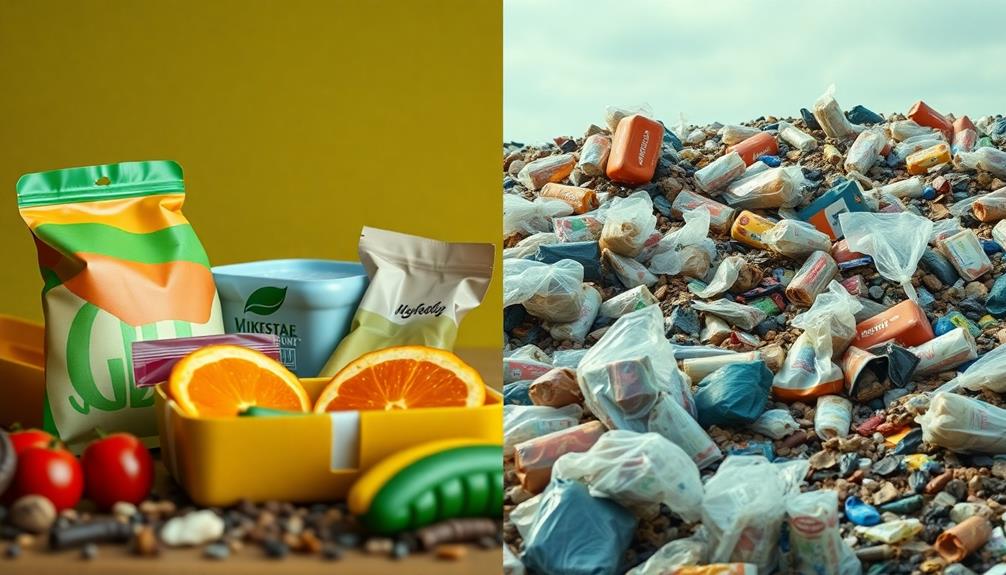
Packaging design greatly impacts your perception of a product's sustainability, but psychological factors also play an essential role in your choices. The visual elements of packaging, like color and design, can considerably influence your consumer perceptions. For instance, colors associated with nature can evoke a sense of eco-friendliness, affecting your purchasing behaviors. Research shows that over 60% of you are willing to pay more for biodegradable and eco-friendly packaging, indicating strong psychological influences toward sustainable options.
Here's how different factors influence your choices:
| Factor | Influence on Choices |
|---|---|
| Color | Conveys green concepts |
| Social Media | Amplifies environmental awareness |
| Brand Identity | Shapes perceived healthiness |
| Education | Aligns perceptions with practices |
| Activism | Motivates eco-friendly choices |
Understanding these influences is vital. Many consumers lack consistent knowledge about eco-friendly packaging, highlighting the need for better education. By enhancing your awareness, you can make more informed choices that reflect your values and contribute positively to the environment.
Impact of Material Selection

Material selection consistently plays an essential role in shaping your perception of sustainability in food packaging. When you choose eco-friendly materials, you're not just making a decision based on aesthetics but also on the significant environmental impact they carry.
For instance, the growing popularity of vegetarian dishes like Mushroom Masala has led to an increased demand for sustainable packaging solutions that align with healthier, eco-conscious eating habits. Many consumers prefer biodegradable materials, as they're increasingly associated with positive environmental perceptions.
Consider these factors in your decision-making:
- Preference for eco-friendly materials: Over one-third of global consumers are willing to pay more for sustainable options.
- Health concerns: Some materials, like paper, can cause chemical migration into food products, raising safety issues.
- Impact of plastic packaging: The production and disposal of plastic contribute heavily to pollution.
- Growing awareness: Many consumers recognize the environmental consequences of packaging choices, especially in fast food.
- Willingness to invest: A significant number of respondents are prepared to pay extra for biodegradable and bioplastic packaging.
Biodegradable vs. Conventional Packaging
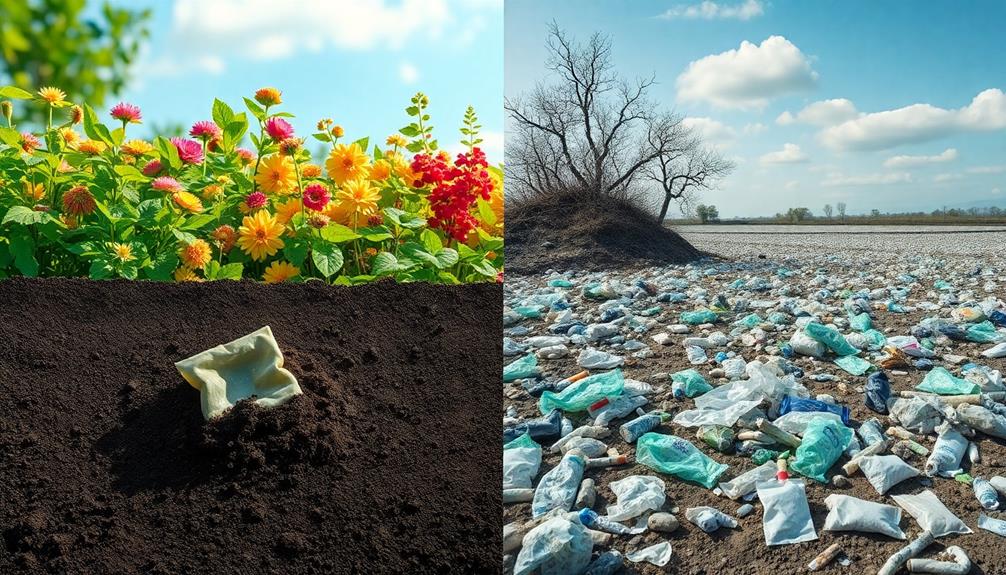
When comparing biodegradable and conventional packaging, you'll notice significant differences in environmental sustainability and decomposition rates.
Biodegradable options, such as those made from plant-based materials, break down naturally, reducing waste and contributing to a more sustainable future. This aligns with the rich culinary traditions found in various cultures that emphasize sustainability, like the Ethiopian Delights which often utilize local ingredients in eco-friendly practices.
In contrast, conventional plastics can linger in the environment for centuries. Plus, considering cost-effectiveness, many consumers are willing to pay a premium for sustainable choices that align with their values.
Environmental Sustainability Comparison
Embracing biodegradable options is becoming essential as we confront the environmental challenges posed by conventional packaging. Innovative practices, such as using Turkey Soup leftovers to reduce waste, highlight the importance of sustainability in food production and packaging.
Biodegradable packaging is designed to break down naturally, considerably reducing environmental impact compared to traditional plastic materials, which can take hundreds of years to decompose. This shift is vital since nearly 50% of municipal solid waste consists of food and packaging materials.
Here are some key points about the importance of biodegradable packaging:
- Lower Carbon Footprint: Biodegradable packaging often results in reduced greenhouse gas emissions throughout its lifecycle.
- Consumer Perception: More than 60% of consumers are willing to pay extra for sustainable packaging, showing a clear preference for eco-friendly materials.
- Plastic Waste Reduction: Shifting to biodegradable options can help minimize plastic waste, which is a major contributor to landfill and ocean pollution.
- Legislative Efforts: Regions like the EU are promoting biodegradable packaging through regulations aimed at reducing single-use plastics.
- Environmental Sustainability: Embracing these materials fosters a more sustainable packaging industry, aligning with growing global environmental goals.
Decomposition Rates Analysis
How quickly does biodegradable packaging break down compared to conventional plastics? Biodegradable packaging typically decomposes within a few months to a few years under ideal conditions, while conventional plastics can linger in landfills for hundreds of years, contributing to severe environmental pollution. This stark difference in decomposition rates highlights the urgency of addressing landfill waste.
For instance, traditional foods like Muamba De Galinha often use simple, sustainable ingredients that reflect the importance of minimizing waste in African cuisine.
Studies show that materials made from plant-based sources considerably reduce landfill waste compared to traditional plastics. However, the effectiveness of biodegradable packaging relies heavily on environmental factors, such as temperature, humidity, and microorganisms, which can either speed up or slow down the breakdown process.
While biodegradable options offer a promising alternative, they often require specific industrial composting facilities for effective decomposition; home composting may not suffice.
Moreover, biodegradable packaging materials typically leave behind fewer harmful residues than conventional plastics, leading to lower environmental toxicity. This characteristic supports healthier ecosystems as these materials break down.
Cost-Effectiveness Considerations
Considering the rising consumer demand for sustainability, businesses are increasingly evaluating the cost-effectiveness of biodegradable packaging compared to conventional plastics.
While biodegradable options often come with a higher initial cost, about 60.64% of consumers are willing to pay more, indicating a notable market shift. This willingness reflects a growing prioritization of sustainability, much like the appreciation for traditional dishes such as Kawarma that emphasize rich flavors and the use of natural ingredients.
Here are some key considerations for businesses:
- Environmental Impact: Biodegradable materials can considerably reduce greenhouse gas emissions during production and disposal.
- Recycling Efficiency: Recycling existing plastics consumes up to two-thirds less energy than producing new plastics, which is essential for cost-effectiveness.
- Waste Management: Biodegradable options, like those from starch and cellulose, often lower waste management expenses due to easier disposal requirements.
- Regulatory Pressures: As regulations tighten around plastic use, investing in biodegradable packaging may mitigate compliance costs.
- Long-Term Viability: The combination of consumer willingness to pay more and regulatory pressures suggests that biodegradable packaging investments can be both environmentally beneficial and economically viable.
Case Studies in Green Packaging
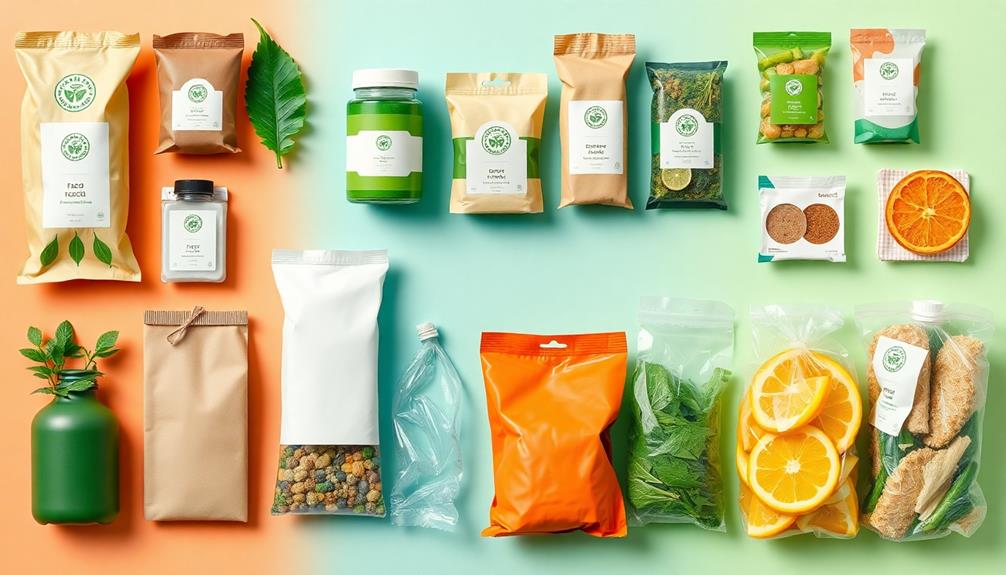
Case studies in green packaging reveal the powerful impact that design choices have on consumer perceptions and behaviors.
For instance, research shows that color choice in packaging plays a vital role in communicating green concepts. Consumers often associate certain colors with sustainability, influencing their perceptions considerably.
When you consider biodegradable materials, you'll find that these are strongly linked to eco-friendliness, enhancing consumer trust in sustainable packaging.
Innovations like carrageenan-based films demonstrate advancements aimed at reducing reliance on traditional plastic packaging, thereby promoting environmental sustainability.
Remarkably, over 60% of respondents in a review expressed a willingness to pay more for biodegradable and bioplastic options, highlighting a robust market demand for green packaging solutions. These insights suggest that businesses should prioritize sustainable materials to align with consumer expectations.
Life cycle assessments of various food packaging materials further emphasize the importance of targeted evaluations.
While plastic packaging contributes less than 10% to total life cycle emissions in most food categories, understanding these metrics can help improve environmental impact and consumer perceptions.
Future Trends in Packaging
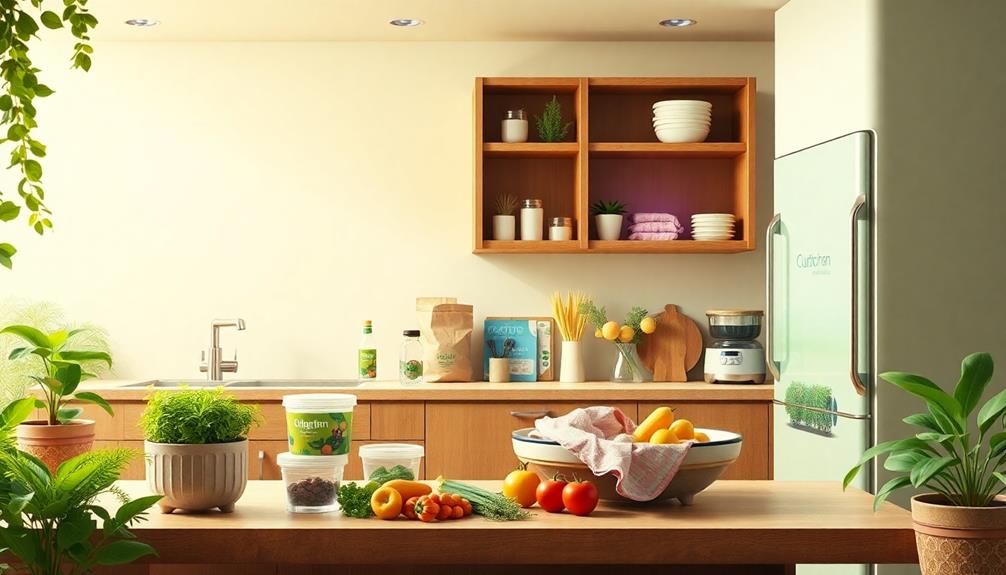
As consumer preferences shift towards sustainability, the future of packaging is shaping up to be greener than ever. By 2030, you can expect a significant rise in demand for recyclable and reusable packaging. Many consumers, willing to pay more for eco-friendly options, are pushing the food packaging industry to adapt. Regulatory changes, such as France's ban on single-use plastics, reflect this evolution.
Key trends in sustainable packaging include:
- Increased use of biodegradable materials
- Growth of recyclable materials in packaging designs
- Innovations in active packaging films to extend shelf life
- Heightened sustainability awareness among consumers
- A projected market growth rate of 5% annually, reaching $3.4 trillion
As these trends unfold, you'll notice how the focus on environmental impact is reshaping your purchasing decisions.
Over one-third of global consumers now prioritize sustainable packaging, indicating a clear shift in consumer preferences. The food packaging industry is responding to this demand, offering more eco-friendly options that align with your values.
Embracing these changes won't only benefit your wallet but also contribute positively to the planet's future.
Recommendations for Improvement
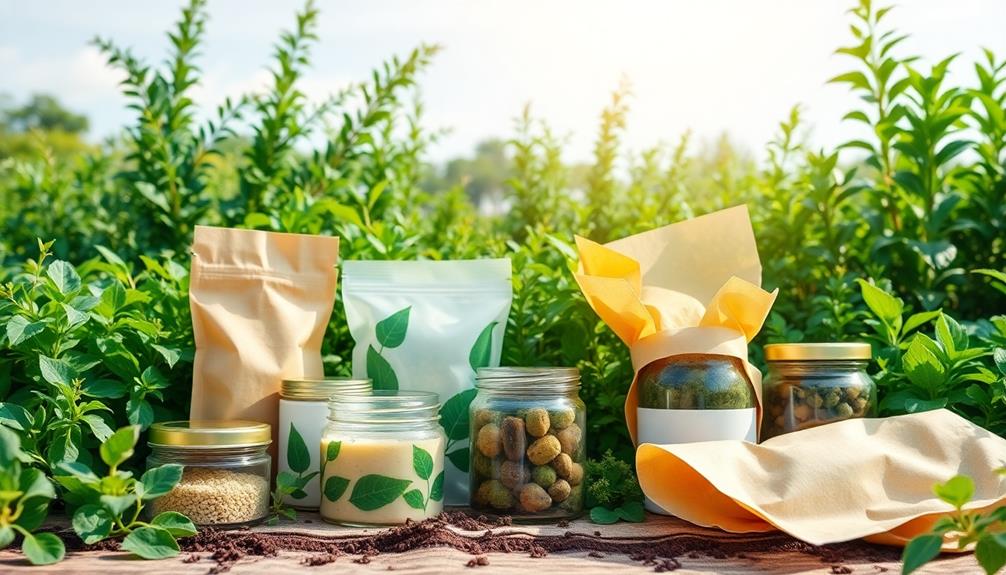
The growing emphasis on sustainability in food packaging opens up new avenues for improvement that can enhance consumer perceptions. You can start by prioritizing sustainable materials, as studies show that over one-third of global consumers are willing to pay more for eco-friendly options.
Clear labeling that indicates recyclability or biodegradability boosts consumer understanding and promotes responsible disposal practices.
Consider using eye-catching colors and designs that align with green concepts; this effectively communicates sustainability messages to your audience. Engaging in consumer education about the environmental impacts of various packaging options is essential, especially since a significant percentage of consumers express confusion regarding eco-friendly materials.
Moreover, don't underestimate the power of collaboration. Partnering with policymakers to support regulations that promote sustainable packaging practices can drive industry-wide adoption and meet the growing consumer demand for environmentally friendly solutions.
Frequently Asked Questions
What Is the Impact of Food Packaging on the Environment?
Food packaging greatly impacts the environment by contributing to waste and greenhouse gas emissions. When you choose products with sustainable packaging, you help reduce plastic pollution and promote eco-friendly alternatives, making a positive difference for our planet.
How Does Product Packaging Affect the Environment?
Product packaging affects the environment by contributing to waste and pollution. When you choose single-use plastics, you're adding to landfills and harming wildlife. Opting for sustainable alternatives can greatly reduce your ecological footprint.
How Does Food Packaging Influence Taste Perception?
Food packaging influences your taste perception by enhancing visual appeal and creating expectations. When you see attractive designs or eco-friendly materials, you're likely to associate them with better quality and flavor, boosting your overall satisfaction.
How Does Packaging and Labeling Affect the Environment?
Did you know nearly 50% of municipal solid waste comes from food packaging? When you choose sustainable options, you're reducing pollution, supporting eco-friendly practices, and helping create a cleaner environment for future generations.
Conclusion
In a world where every choice shapes the planet's future, your awareness of food packaging can spark a green revolution. By opting for sustainable designs, you're not just making a purchase; you're casting a vote for a healthier Earth. Imagine each biodegradable wrapper as a seed of change, blossoming into a cleaner environment. Together, let's unwrap the potential of thoughtful packaging, turning our small actions into a tidal wave of positive impact for generations to come.
